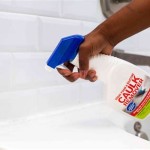Cats In Bathtub: Essential Aspects
Cats and bathtubs may seem like an unlikely combination, but for many cat owners, it's a reality they have to deal with. Whether your cat loves or hates baths, there are some important things to keep in mind to ensure a safe and stress-free experience for both you and your feline friend.
Safety First
Before you even start thinking about giving your cat a bath, you need to make sure the bathroom is safe. This means removing any potential hazards, such as loose cords or cleaning supplies. You should also make sure the bathtub is clean and free of any soap residue that could irritate your cat's skin. Closing the bathroom door to create a safe and enclosed space is recommended during cat bath time.
Use the Right Temperature Water
Cats are very sensitive to temperature, so it's important to use lukewarm water when bathing them. The water should be warm enough to remove dirt and dander, but not so hot that it burns your cat's skin. A good rule of thumb is to test the water with your elbow before putting your cat in the tub.
Be Gentle and Patient
Cats are not naturally fond of water, so it's important to be gentle and patient when bathing them. Use a soft washcloth or sponge to gently wash your cat's fur, avoiding the face and ears. Be sure to rinse your cat thoroughly to remove all soap residue.
Don't Over-bathe Your Cat
Cats do not need to be bathed frequently. In fact, bathing them too often can actually strip their fur of its natural oils, making it dry and brittle. A good rule of thumb is to bathe your cat once a month or as needed. If your cat gets particularly dirty or has a skin condition, you may need to bathe them more often.
Drying Your Cat
Once you've finished bathing your cat, it's important to dry them thoroughly to prevent them from getting cold. You can use a soft towel to gently pat your cat dry. You can also use a hair dryer on a low setting, but be sure to keep it away from your cat's face and ears. If possible, let your cat air-dry in a warm room.
Reward Your Cat
After your cat's bath, it's important to reward them with a treat or some playtime. This will help them associate bath time with something positive, making it easier for you to bathe them in the future.

21 Hilarious Photos Of Cats In Baths

Cat Bathtub Images Browse 15 083 Stock Photos Vectors And Adobe

Cat Joins Mom Every Time She Takes A Bath The Dodo

Cats Vs Bathtubs

Cats In Bathtub By Sega Chan On Deviantart

Bath Time Why And How You Should Bathe Your Cat Preventive Vet

Cat That Was Labeled As Too Aggressive For Adoption Proves Everyone Wrong S Et Ons Mignon Adorables
:strip_icc()/cats-in-the-bathroom-554029-hero-3d3735d295614a38bad346da9edac558.jpg?strip=all)
7 Reasons Why Cats Love Bathrooms

Hilarious Cat Jumps Into Tub Instantly Regrets It

Cat Falls Into Bathtub By Accident Its Reaction Is Hilarious Watch Trending Hindustan Times








